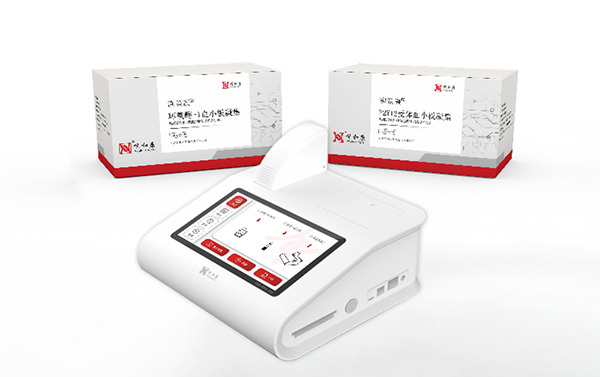What are some in-vitro diagnostic devices?
Published:
2024-04-11
In vitro diagnostics (IVDs) refers to products and services that obtain clinical diagnostic information by testing human samples (blood, body fluids, tissues, etc.) outside the human body, thereby determining diseases or bodily functions. In vitro diagnostic equipment, as the name suggests, refers to the instruments and equipment used in in vitro diagnostics. It, together with in vitro diagnostic reagents, is collectively referred to as in vitro diagnostic products.
In vitro diagnostics (IVDs) refers to the products and services that obtain clinical diagnostic information by testing human samples (blood, body fluids, tissues, etc.) outside the human body, and then judging diseases or the body's functions. In vitro diagnostic equipment, as the name suggests, is the instruments and equipment used in in vitro diagnostics, and together with in vitro diagnostic reagents, they are collectively referred to as in vitro diagnostic products.
II. What are in vitro diagnostic devices?
In vitro diagnostic devices are numerous and classified. According to the diagnostic method, they can be divided into clinical chemistry analyzers, immunochemistry analyzers, blood analyzers, and microbiology analyzers; according to the matching reagents, they can be divided into open systems and closed systems. Commonly used in vitro diagnostic devices mainly include:
1. Biochemical analyzers
Instruments used to detect and analyze biological chemical substances, providing clinical information for the diagnosis, treatment, prognosis, and health status of diseases. The main ones include: creatinine analyzers, blood glucose analyzers, hemoglobin analyzers, etc.
2. Electrolyte analyzers
Electrolyte analyzers are indispensable in clinical testing. In clinical practice, they mainly test the balance of osmotic pressure in human blood and body fluids. In patients who need a large amount of balanced fluid replenishment, such as surgery, burns, diarrhea, and acute myocardial infarction, ion testing and detection are very important. This instrument has high precision and accuracy, and the results measured for any sample are accurate, reliable, fast, and very simple to operate. Therefore, ion detection is a common device in hospitals at all levels.
3. Biochemical immunochemical analysis equipment
A method that combines a luminescence reaction with an immune reaction to detect antigens or antibodies. It uses micro-amplification technology, with good sensitivity and specificity; the detection range is very wide, from traditional proteins, hormones, and enzymes to drugs. Those most commonly used clinically are fully automated chemiluminescence immunoassay analyzers, fully automated microparticle chemiluminescence immunoassay analyzers, and fully automated electrochemiluminescence immunoassay analyzers.
4. PCR nucleic acid amplification instruments
An instrument that uses PCR polymerase chain reaction technology to amplify specific DNA, widely used in medical and biological laboratories, such as determining whether a specimen shows a map of a certain genetic disease, diagnosing infectious diseases, gene replication, and paternity testing.
5. Sample separation equipment: medical centrifuge
A medical centrifuge is often used as an instrument for separating serum, plasma, precipitating proteins, or performing urine sediment examinations. Using a centrifuge can quickly precipitate suspended particles in a mixed liquid to separate the components of various substances with different specific gravities.
6. Blood analyzers
Mainly used to detect various blood cell counts, white blood cell classification, and hemoglobin content. Through the content of these three cells, the body's condition is diagnosed in vitro. It provides various abnormal alarm information, effectively helping doctors screen abnormal samples, providing reliable diagnostic basis, and playing an important role in the diagnosis and treatment of various anemias and related diseases.
7. Microbiological analyzers
It has automatic colony counting and inhibition zone measurement functions, suitable for research institutions, hospitals, inspection and quarantine institutions, and industrial fields to conduct microbial colony counting and content analysis, antibiotic antibacterial tests, and bacterial antibiotic susceptibility analysis.
8. Sampling equipment and instruments
Used for blood collection in in vitro diagnostics, the main equipment includes: blood collection pens, capillary blood collection needles, vacuum blood collection systems, etc.
9. In vitro diagnostic software
It has functions such as acquisition, transmission, synthesis, observation, analysis, processing, and reporting of images obtained from various microscopic devices. The main software includes: chromosome analysis software, urine sediment analysis software, medical microscopic image analysis software, etc.
10. Other analytical instruments
Such as: chromatographic columns, electrophoresis instruments, flow cytometers, osmometers, etc.
Keywords:
Learn more about industry trends












